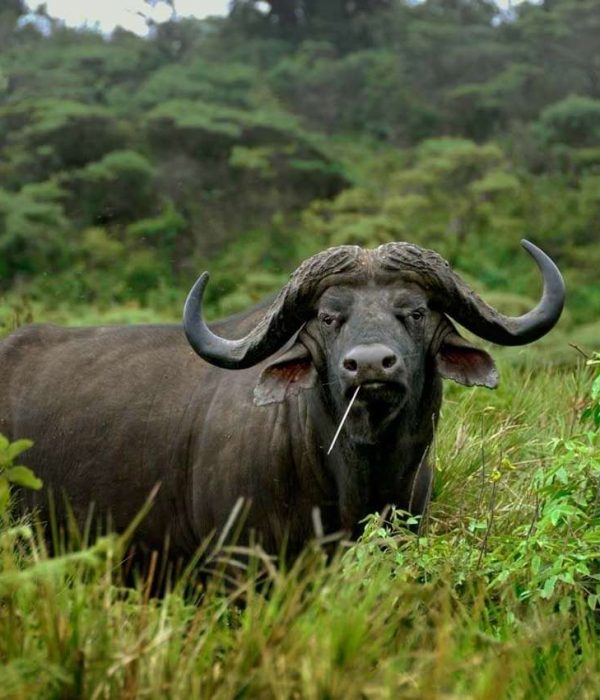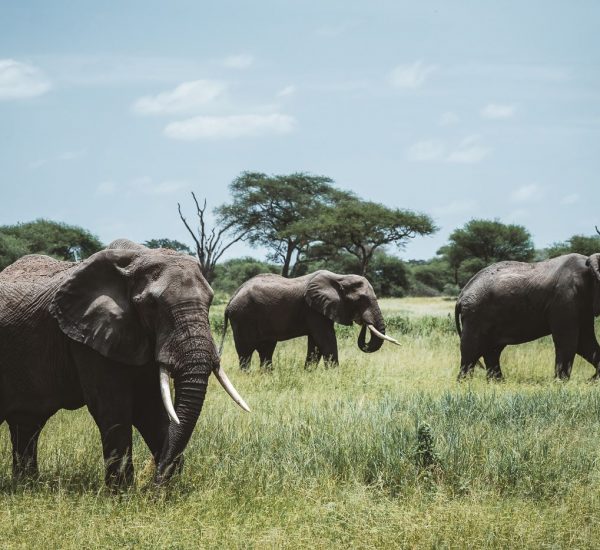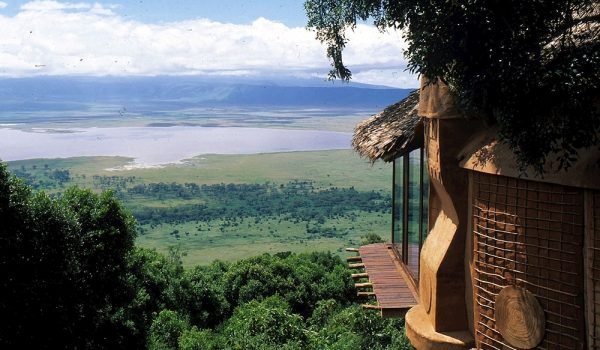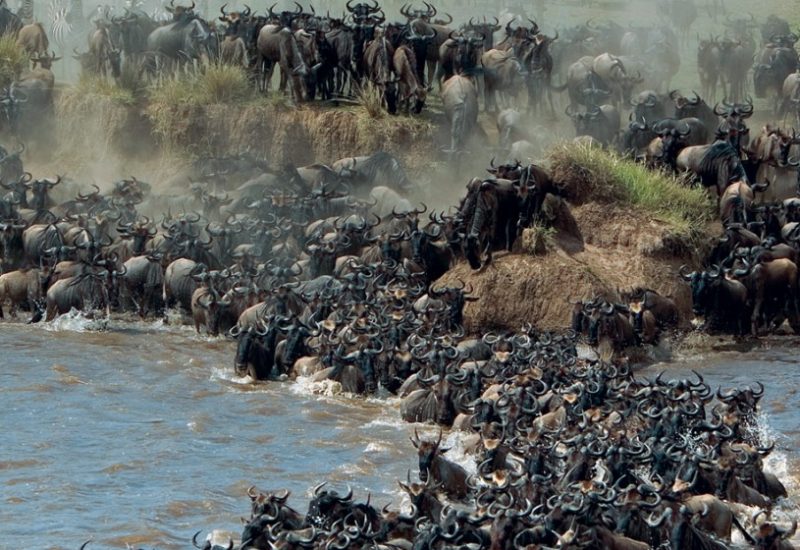NORTHERN CIRCUIT
Arusha National Park has a rich variety of wildlife, but visitors shouldn’t expect the same game-viewing experience they find in other national parks of Tanzania’s northern circuit.
It is a great place for walking; one can enjoy natural forest in comfort because of the cool climate. The walking activity has to be arranged in advance and must be accompanied by armed ranger. Canoeing on a small Momela lake is also available by prior arrangements withbushbuck, Buffalo, Giraffe and hippos often seen during this excursion.
ABOUT ARUSHA NATIONAL PARK
Size: 552 sq km 212 sq miles).
Location: Northern Tanzania, northeast of Arusha town..
GETTING THERE
An easy 40-minute drive from Arusha. Approximately 60 km (35 miles) from Kilimanjaro International Airport. The lakes, forest and Ngurdoto Crater can all be visited in the course of a half-day outing at the beginning or end of an extended northern safari.
NOTE: Mountain Climbing Permits duration time is 12 HOURS.
WHAT TO DO
Forest walks, numerous picnic sites;
three- or four-day Mt Meru climb – good acclimatisation for Kilimanjaro.
WHEN TO GO
To climb Mt Meru, June-February although it may rain in November.
Best views of Kilimanjaro December-February.
ACCOMMODATION
Two lodges, two rest houses, camp sites, two mountain huts inside the park; more lodges at Usa River outside the park and many hotels and hostels in Arusha town

Tarangire National Park,The open grasslands, acacia trees and the Tarangire River paint the wild landscape.The main activities are game drives, walking safari with armed guides (rangers) and night game drives. During game drives, you will spend yourdays on searching of eland, oryx, wildebeests, zebras and a large elephant population. Keep your eyes trained for hartebeests, gazelles and exotic birds like the bateleur and martial eagle.
Tarangire matches well with northern circuit safari programs. It takes approximately two hours’ drive from Arusha town to Tarangire gate and you can easily drive from Tarangire to Serengeti national park via Mto wa mbu village, Karatu and the Ngorongoro conservation area.
ABOUT TARANGIRE NATIONAL PARK
Size: 2850 sq km (1,096 sq miles).
Location: 118 km (75 miles) southwest of Arusha.
GETTING THERE
Easy drive from Arusha or Lake Manyara following a surfaced road to within 7km (four miles) of the main entrance gate; can continue on to Ngorongoro Crater and the Serengeti.
Charter flights from Arusha and the Serengeti.
WHAT TO DO
Guided walking safaris.
Day trips to Maasai and Barabaig villages, as well as to the hundreds of ancient rock paintings in the vicinity of Kolo on the Dodoma Road.
WHEN TO GO
Year round but dry season (June – September) for sheer numbers of animals.

Lake ManyaraNational Park lies up against the steep western wall of rift valley. It is directly en route to Ngorongoro from Arusha and Tarangire therefore this makes it very popular for either day trip or overnight. Most of the characteristic east African mammals are found in Manyara including cheetahs, leopard, buffalo, hippos, elephants, giraffe and the largest baboon troops in Africa.
It is in Manyara where some lions opted to rest up in the trees during the heat of midday, giving rise to the mistaken belief that the Manyara lions are somehow different .Lions in many part of Africa spend time in the lower broad limbed branches of trees probably to escape flies.
Lake Manyara National Park is also known for flocks of thousands flamingos that feed along the edge of the lake in the wet season. Activities in Manyara National park includes Game drives, this is the main activity. Guests can enjoy driving along the network roads within the park.
ABOUT LAKE MANYARA NATIONAL PARK
Size: 330 sq km (127 sq miles), of which up to 200 sq km (77 sq miles) is lake when water levels are high.
Location: In northern Tanzania. The entrance gate lies 1.5 hours (126km/80 miles) west of Arusha along a newly surfaced road, close to the ethnically diverse market town of Mto wa Mbu.
GETTING THERE
By road, charter or scheduled flight from Arusha, en route to Serengeti and Ngorongoro Crater.
WHAT TO DO
Game drives, night game drives, canoeing when the water levels is sufficiently high.
Cultural tours, picnicking, bush lunch/dinner, mountain bike tours, abseiling and forest walks on the escarpment outside the park.
WHEN TO GO
Dry season (July-October) for large mammals;
Wet season (November-June) for bird watching, the waterfalls and canoeing.

The Ngorongoro Conservation Area is a protected area and a World Heritage Site located 180 km (110 mi) west of Arusha in the Crater Highlands area of Tanzania. The area is named after Ngorongoro Crater, a large volcanic caldera within the area.The Ngorongorocrater formed when a large volcano exploded and collapsed two to three million years ago.
The volcanic eruptions like that of Ngorongoro, which resulted in the formation of Ngorongoro Crater in Tanzania, were very common. Similar collapses occurred in the case of Olmoti and Empakaai, but they were much smaller in magnitude and impact.
Main activity is game drives in the Ngorongoro Crater floor, a vast expanse where animal activity is common place Approximately 25,000 large animals, mostly ungulates, live in the crater. Wildlife in the crater include the black rhino, buffalo, wildebeest, zebra, the common eland, Grant’s, Thomson’s gazelles, Waterbucks, lions, hippos, crocodiles.
HOW TO GET THERE
There is a drive from Arusha that takes around 4 hours to reach Ngorongoro Crater.
Alternatively you can fly to Manyara airstrip, which is about an hour from the Crater itself.
WHAT TO DO
Walking safaris, game drive safaris, visit to the Empakaai Crater or Olduvai Gorge.

The Serengeti is Africa’s most famous park. Renowned for its incredible concentrations of predators and the Great Migration of two million wildebeest, the Serengeti guarantees an exceptional safari. The endless grassy plains (Serengeti in Maasai) are the richest grazing grounds on the continent, and therefore home to the largest herds and the highest concentrations of predators on the planet.
To focus solely on the Great Migration would be to do the Serengeti a grave injustice. Even taking the Great Migration out of the equation, it can be argued that the Serengeti is nevertheless the finest park in Africa. Vast herds of grazers, huge prides of lion, spectacular expanses of uninterrupted views, wildebeest river crossings, great leopard sightings, good concentrations of cheetah and some of the best camps in Africa – what more could you want!
The Serengeti is one of those very rare places that has a huge reputation, yet still somehow manages to surpass expectations and take your breath away. Surrounded by remarkable tribes such as the Masai and Hadzabe, this wider area is also fascinating from a cultural perspective. In a nutshell, the Serengeti is the mother of all safari parks and the most celebrated wildlife reserve in the world. There is absolutely nowhere else to match it. Absolutely outstanding!
Originally created to preserve the path of the Great Migration, the Serengeti and its surrounding reserves cover nearly 30,000 square kilometres. Throughout the year huge herds of wildebeest and zebra move in a clockwise direction around the vast plains, searching for fresh grazing grounds.
For further information on the movement of the herds, have a read of our Great Migration page. To maximise your chances of viewing the herds, it is crucial to choose the right accommodation for the time of year you are travelling. Witnessing the migration in the Serengeti is really as good as it gets in terms of your Tanzania Safari.

Lulu African Safaris and Tours Company Ltd © 2022 | All Rights Reserved.